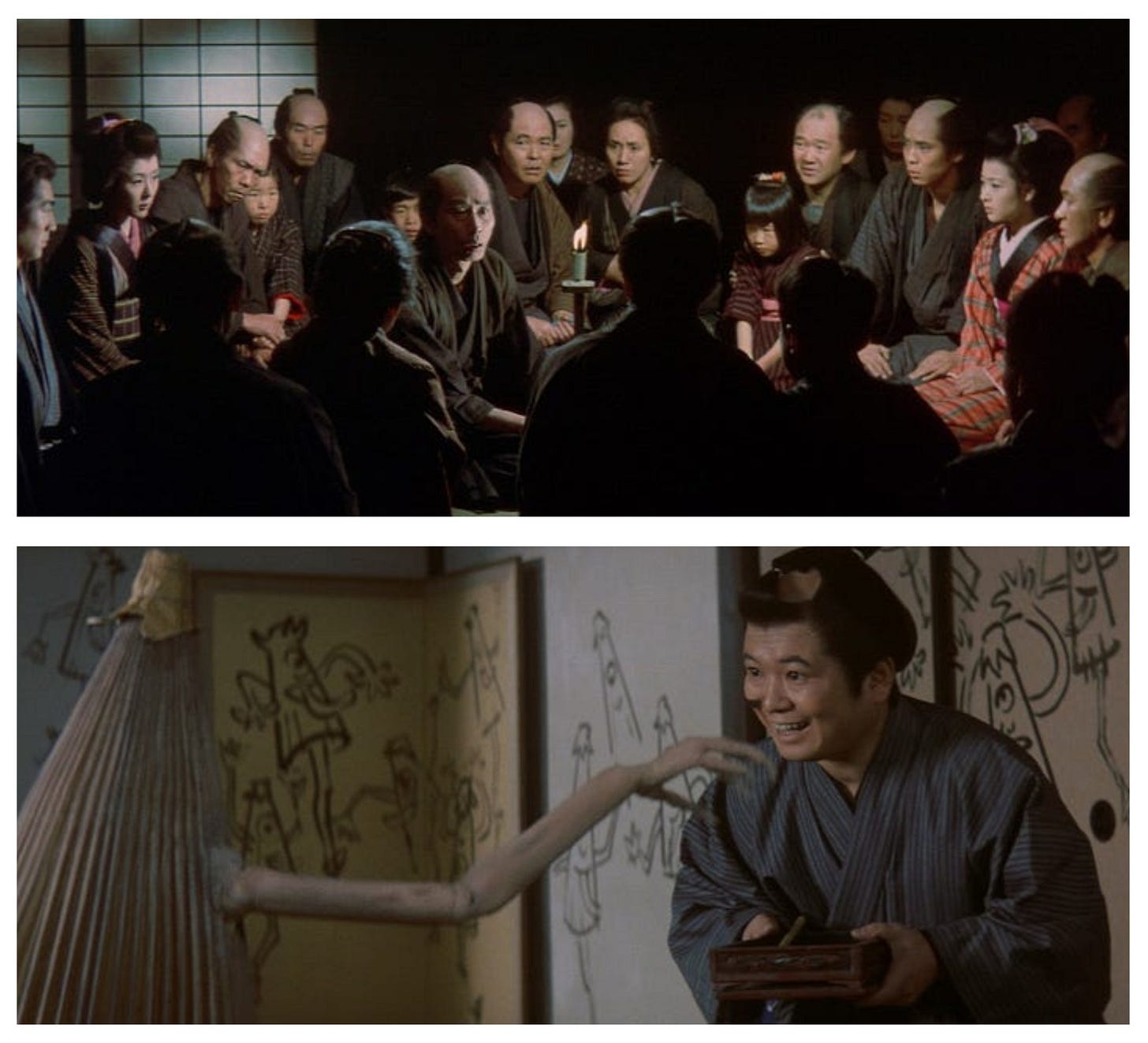Supernatural Scrolls - yōkai in art & media
Exploring the spooky Japanese art that has recorded the surreal world of yōkai for centuries, from woodblock to celluloid…
Most children in the west know what fairies and goblins — even vampires and werewolves — are. They’ll even have a general idea of what they look like and how they may behave. There’s little need for detailed descriptions and explanations. Well, that’s how it is for Japanese children and yōkai. Indeed, fairies, goblins, vampires, and werewolves would all come under the umbrella term… as would umbrellas!

Just as with fairies, there’s an immense variety of yōkai and their tales are inextricably woven into the cultural history of Japan just as Grimm’s fairy tales, regional folklore, and ghost stories are in Europe’s heritage. So, that’s a good way into the general concept — a starting point from which to explore the more intricate subtleties.
The origins of yōkai folklore are lost in the mists of time and draw together threads from across Asia, but it was during the Edo Period that telling tales of yōkai became an increasingly popular pastime among the cultured elite. They would hold ‘gatherings of 100 supernatural tales’ (hyakumonogatari kaidankai) to exchange spooky stories. These events — perfectly suited for a Halloween party — involved the lighting of many candles. It didn’t have to be 100, but required at least one for each guest.
Those present would then take turns to tell a scary story as if they had experienced it themselves. The tales would draw upon the folklore of their home town or where they grew up, so such gatherings were often performed for visitors from other regions as a form of cultural exchange. The stories always featured yōkai and yūrei. (The term yūrei includes ghosts but, confusingly, yōkai can become ghosts and vice versa.)
Each guest would mark the end of their story by extinguishing a candle and eventually only one flickering flame would remain. It’s said that when that final flame was blown out, a spirit from one of the evening’s tales would appear in the room! So, there were prayers to be said before it went out, or if bravadoes had been fortified by drinking enough sake, they wouldn’t bother with that and see what manifested… or not.

These gatherings caught-on among the wider public and there was a huge market for picture scrolls featuring the various whimsical creatures and terrifying monsters. The artist and scholar, Toriyama Sekien began cataloguing yōkai and by 1776 had published the seminal Gazu Hyakki Yagyō / Illustrated Night Parade of a Hundred Demons. By the 1780s, he was compiling ‘best of’ collections with evocative titles such as, Bag of One Hundred Random Demons, or A Horde of Haunted Housewares. Sekien’s collected illustrations became the definitive dictionaries of yōkai that influenced how they would be perceived to this day.
Katsushika Hokusai, the great woodblock artist of the late Edo, also set out to publish his own illustrated collection of Hyaku Monogatari / One Hundred Ghost Stories. Though, by 1830, he’d only produced five before abandoning the project. No one’s sure why he never finished his yōkai opus. Perhaps there’s a tale of terror and imagination yet to be told?
Keep reading with a 7-day free trial
Subscribe to Remy Dean 🏴☠️ to keep reading this post and get 7 days of free access to the full post archives.

